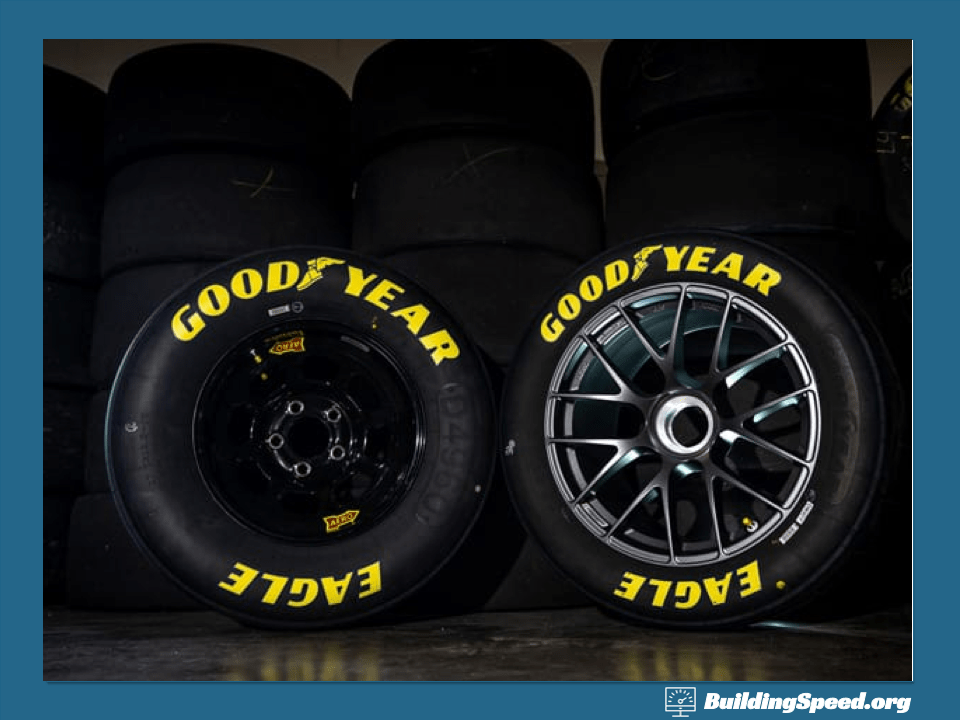Home>Sports>NASCAR>NASCAR Cars
PreviousNext
For the 2022 season, NASCAR transitioned from five lug nuts per wheel to a single lug nut per wheel on each of its cars.
NASCAR decided to implement the one-lug nut design due to the introduction of new 18-inch aluminum wheels. Compared to the current wheels on the race cars, the new wheels are three inches larger in diameter. With larger wheels, using one lug nut versus five increases the stability and durability of the wheels. Using a single lug nut greatly reduces the risk of improperly securing the wheel to the hub.
NASCAR engineers determined that the risk of failure while using five lug nuts on the new aluminum wheels was unacceptably high, and so they recommended the change to a single-lug design.
By switching to single-lug wheels, teams are able to make faster pit stops. The new tires only take about 0.5 seconds to remove, compared to the Gen-6, which required between 0.8 and 1 second. As a result, the average duration of pit stops has been reduced to 10 seconds. The ability of pit guns to remove one lug nut faster than the current five lug nut design is due to the higher torque of the single lug nut. However, since more threads are required to attach the larger single lug nut, the pit gun will need to remain on the wheel for longer. The time required to change a wheel has been reduced, and the average total pit stop time has decreased.
With the change in tires and the number of lug nuts per wheel, pit stop procedures have not significantly changed. Prior to the 2022 season, John Probst, NASCAR senior vice president of innovation and racing development, ensured fans that there would not be any large changes to the way the pit stop crew carried out their roles, and he has been proven correct.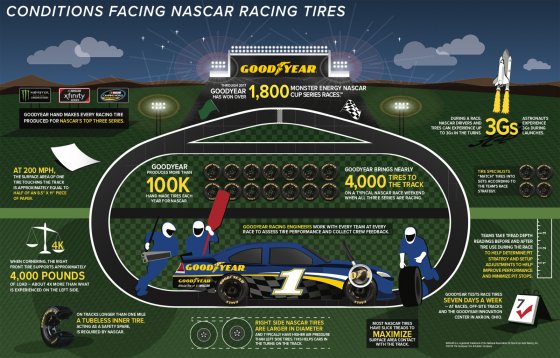 Probst expressed that crew members will still jump over the walls and need to rush from the right side of the car to the left to change all four tires, as the pit stops during the 2022 season have shown.
Probst expressed that crew members will still jump over the walls and need to rush from the right side of the car to the left to change all four tires, as the pit stops during the 2022 season have shown.
After the change to single-lug nut wheels was announced, NASCAR received positive support from the majority of the Cup Series teams. However, some teams were resistant to the change because of their earned competitive advantage from effectively training crews to change five lug nuts. Most teams have found success and competitive advantage using the new single-lug wheels. One unforeseen complication has been an increase in loose tire penalties. Unlike in a five-lug design, where one loose nut will not cause the wheel to immediately come loose, if the single-lug nut is loose or not properly seated, the wheel quickly becomes loose itself. Tire changers have become extra vigilant lest their teams incur suspensions and fines.
While the switch to a single lug nut was a significant change, there are several other changes in the sport that have resulted from the switch.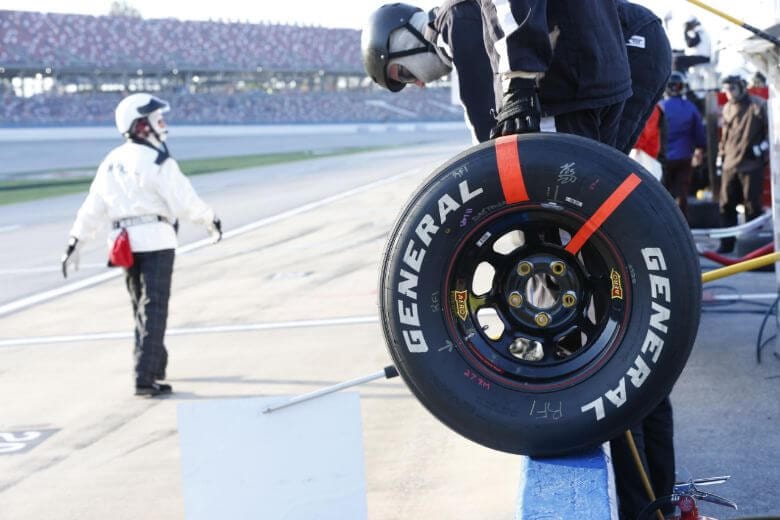 One change is the easing of penalties for lug-nut violations. While lug-nut violations typically resulted in an automatic four-week suspension for the crew chief, tire changer, and jack operator, NASCAR officials now consider whether a dangerous situation was created when assessing such penalties.
One change is the easing of penalties for lug-nut violations. While lug-nut violations typically resulted in an automatic four-week suspension for the crew chief, tire changer, and jack operator, NASCAR officials now consider whether a dangerous situation was created when assessing such penalties.
Another change is that the five-lug nut design required the nuts to be glued to the wheels. The switch prevents teams from having to do this and reduces the preparation time needed before a race.
A lug nut is a metal piece used to fasten a wheel to a car. More specifically, the lug nut secures the hub of the wheel to the studs on the axle of the car. This helps to center the wheel on the axle and hold it in place. Lug nuts are usually made of chrome-plated steel but can also be made of titanium or anodized aluminum which are more lightweight than the steel ones.
To tighten a lug nut, the tools needed include a socket wrench and a torque wrench.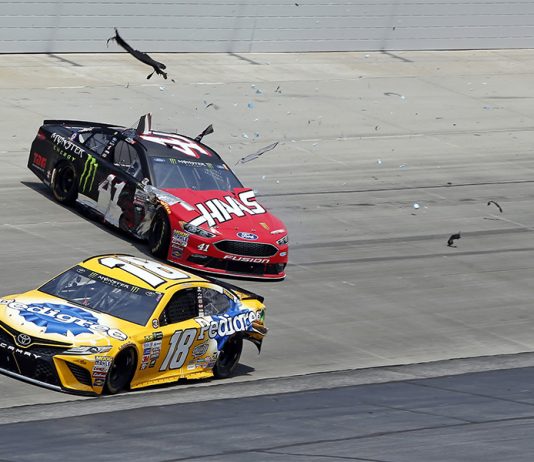 However, pit crew members use a power tool called an impact wrench that requires less effort to tighten lug nuts. When using the traditional tools, the lug nut is placed on the wheel and initially tightened with the socket wrench. Following this method, the torque wrench is used to finish tightening the nut until the wrench produces a clicking noise, signaling that the nut is tightened all the way.
However, pit crew members use a power tool called an impact wrench that requires less effort to tighten lug nuts. When using the traditional tools, the lug nut is placed on the wheel and initially tightened with the socket wrench. Following this method, the torque wrench is used to finish tightening the nut until the wrench produces a clicking noise, signaling that the nut is tightened all the way.
After a NASCAR race, cars are subjected to a lug-nut check to ensure that all of their lug nuts are safely secured. A lug-nut penalty is assessed to a team when a lug nut on a car’s wheel is not securely fastened. The maximum penalty for a lug-nut penalty is a $10,000 fine for the team and a four-week suspension for the crew chief, tire changer, and jack operator. NASCAR considers whether a dangerous situation was created as a result of the loose lug nut when determining the severity of the penalty.
When wheels had five lug nuts, glue was an essential part of the wheel’s functionality.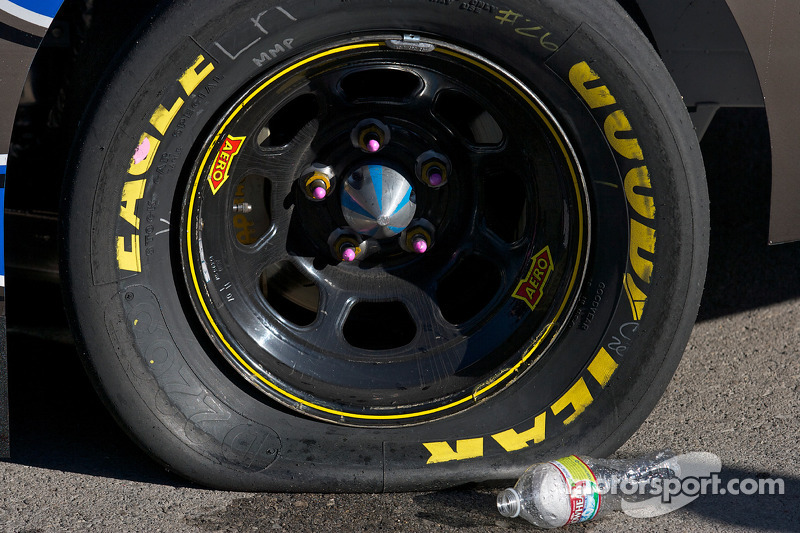 Before each race, the lug nuts were glued to the wheel, and the glue was the only thing keeping the lug nuts in place. Furthermore, the amount of glue used is crucial when securing the lug nuts. The glue should not be too dry or too sticky. In addition, the timing of when the glue is applied is also important depending on the given weather conditions.
Before each race, the lug nuts were glued to the wheel, and the glue was the only thing keeping the lug nuts in place. Furthermore, the amount of glue used is crucial when securing the lug nuts. The glue should not be too dry or too sticky. In addition, the timing of when the glue is applied is also important depending on the given weather conditions.
PreviousNext
PreviousNext
By Nate RyanMar 2, 2020, 3:00 PM EST
NASCAR will switch to a single lug nut for fastening its tire and wheel assemblies in Cup cars next season, ending decades of using a renowned five lug nut pattern.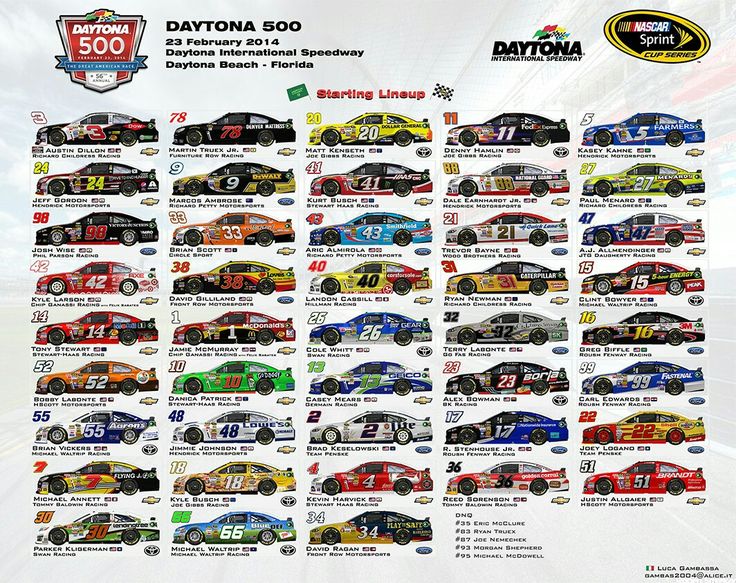
An official told NBC Sports the move was driven by the new 18-inch aluminum wheels (3 inches bigger than the current wheel) that will be used with the NextGen car, which will make its debut with the 2021 season, and are intended to increase product relevance for manufacturers.
According to engineering analysis, NASCAR senior vice president of innovation John Probst said the durability of the new wheels decreases by 30 percent with five lug nuts.
“The answer became pretty clear that we needed to go single lug nut,” Probst said. “And I know that a lot of folks might say, ‘Well, if product relevance is your main goal, name me a car that has a single lug nut.’ I’m not sitting here saying I could, but I can name lots of cars that have 18-inch aluminum wheels. And that once we decided 18-inch aluminum wheels was the primary driver, the engineering solution was pretty clear.
(Photo by Sarah Crabill/NASCAR via Getty Images)“It’s almost never the case that all five lug nuts are literally tight to the wheel, and if we don’t have five lug nuts tight to the wheel, the durability of an aluminum wheel drops.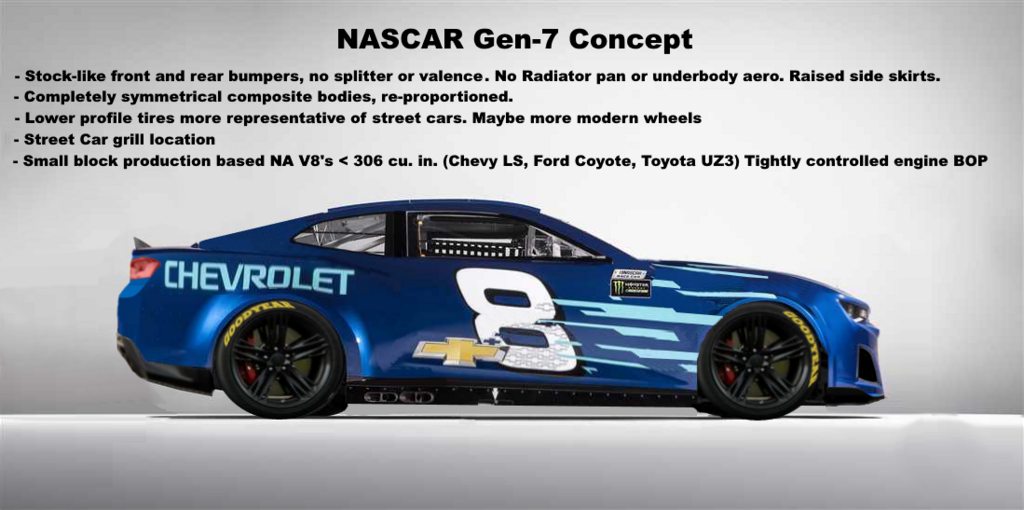 If all lug nuts could be guaranteed tight, five is a workable solution. With the pressure to do a very fast pit stop, I can’t say that we have knowledge that all five are ever completely 100% tight to the torque spec.”
If all lug nuts could be guaranteed tight, five is a workable solution. With the pressure to do a very fast pit stop, I can’t say that we have knowledge that all five are ever completely 100% tight to the torque spec.”
Because of a higher torque, the pit gun will be applied longer to a single lug nut vs. five but still will take a shorter amount of time. NASCAR estimates that it will take roughly 0.5 seconds to remove the single lug (and the same time to reapply) vs. the 0.8-1.0 second for a top-flight tire changer removing five lug nuts (and running the pattern back on in the same time). So the move could drop four-tire pit stops consistently into the 10-second range.
Probst said most Cup teams are in favor of the move, which NASCAR hopes will allow teams to use wheels in multiple years (instead of multiple races with the current steel wheels). There has been some pushback from teams that cite the competitive advantages from investing money and time for training crews to change five lug nuts.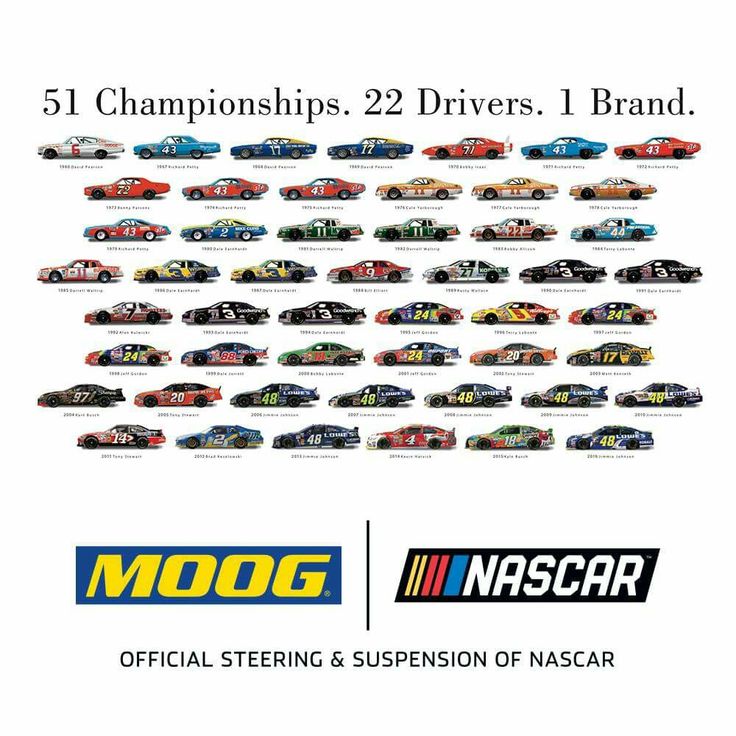
There also has been speculation on how such a move might impact the value of tire changers.
A Goodyear rendering of the 18-inch aluminum wheel with a single lug nut.Unlike other racing series that use single lug nuts and allow tire changers to be in place before the stop (such as IndyCar), NASCAR is keeping the same pit stop procedures with a single lug nut. Probst said the choreography of scrambling from the right to left side should keep pit crew members in demand as highly skilled athletes who are among the most well-paid team members in NASCAR.
“Nobody’s done it, so I’m not sure anyone can have an informed opinion on how it’s going to affect them,” Probst said. “But there’s still a premium on getting from the pit wall to the right hand side of the car. That’s not going to change. You’re still going to have to get the nut off and back on as quickly as possible. That’s not going to change. You’re going to have to go from the right hand side to the left hand side of the car as quickly as possible.
“The amount of the time on a lug nut today is less than a second, but the time from the right hand side to left hand side is much more than that. So shaving off the time from the left to right side is going to have a bigger impact. I don’t anticipate myself in the near future changing tires. You’re still going to have a massive premium on speed because that’s going to determine the length of your pit stop. They’re still going to be professional athletes.”
Other notable elements from the move to a single lug nut:
–There will be no more postrace lug nut checks or lug nut penalties.
Gluing on lug nuts will become a thing of the past in Cup next season. (Photo by Sarah Crabill/Getty Images)–Because the lug nut will be retained in the socket, the change from five lug nuts will end the practice of gluing lug nuts to the wheels, which will cut down on prerace preparation time (thousands of lug nuts are glued to wheels before races over the course of a season).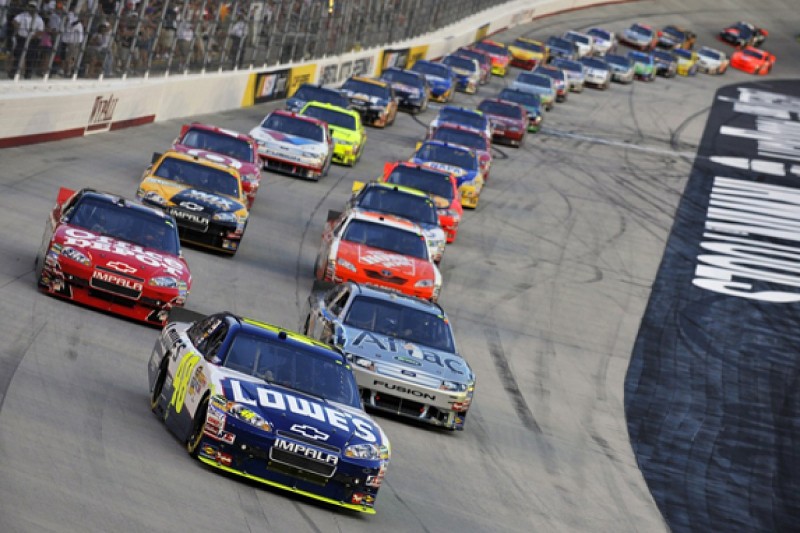 It also should save time for practicing stops as teams could rotate a few sets of wheels instead of needing to glue lug nuts on a dozens of sets for a pit crew training session at their shops.
It also should save time for practicing stops as teams could rotate a few sets of wheels instead of needing to glue lug nuts on a dozens of sets for a pit crew training session at their shops.
–Teams should be replacing wheels less often because five lug nuts deliver more of a pounding than a single lug nut – particularly when they aren’t tight and the wheel wobbles (which can cause the lug nut holes to deform). Aluminum also is less forgiving than the previously steel wheels, making a switch to a single lug nut more logical.
–The single lug nut will be used for the first time Monday and Tuesday during the NextGen test at Auto Club Speedway (with William Byron). But there will be no pit stops simulated under race conditions at the test.
–NASCAR has no plans to adjust pit crew or roster sizes. Though the tire and wheel assembly will be lighter, it won’t be in a significant measure that affects how the tires are delivered to the car.
By Mike HembreeDec 15, 2022, 9:27 AM EST
Drivers Michael McDowell and Todd Gilliland will return to Front Row Motorsports for the 2023 NASCAR Cup Series season, the team announced Thursday.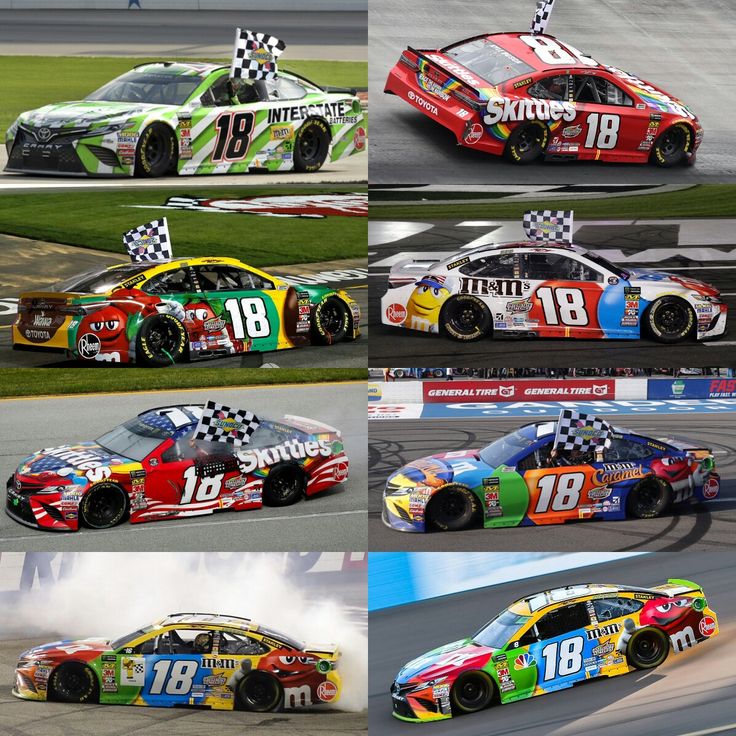
McDowell, coming off the best season of his career, will stay in the No. 34 Ford. Gilliland will be in his second season in the No. 38.
Both drivers will be working with new crew chiefs — Ryan Bergenty with Gilliland and Travis Peterson with McDowell.
“Michael and Todd are an intricate part of continuing our NASCAR Cup Series success in 2023,” said FRM general manager Jerry Freeze in a statement released by the team. “Michael and the No. 34 team are coming off a record year, and we believe with Travis Peterson they will only build on that success and have an even better season. Todd showed us growth in his rookie campaign.”
Seth Barbour is the team’s new technical director.
McDowell had two top-five and 12 top-10 finishes in 2022. Gilliland had a top five and two top 10s in his rookie year.
By Mike HembreeDec 14, 2022, 10:32 AM EST
The somewhat difficult birth of what now is the world’s leading stock car racing organization began Dec.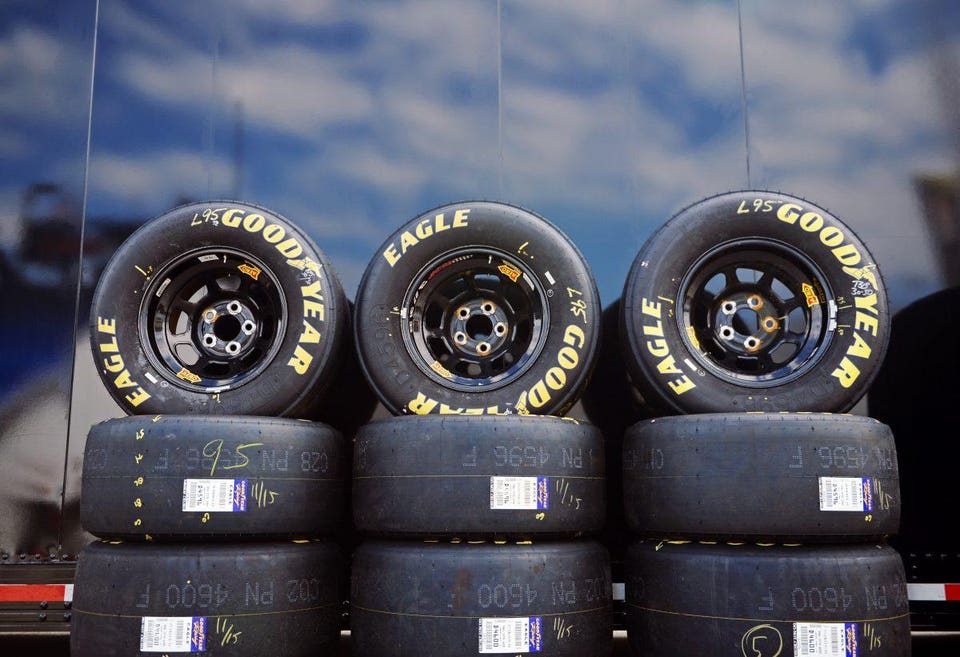 14, 1947 not far from the Atlantic Ocean in Daytona Beach, Fla.
14, 1947 not far from the Atlantic Ocean in Daytona Beach, Fla.
Promoter, mechanic and sometimes race car driver Bill France Sr. arranged a meeting of various men — and they were all men — involved at different levels of racing and from locations around the country. The idea, France told the group of about 35, was to form a national stock car racing organization to bring standards and consistency to the sport. He said there were too many different racing groups with different rules and regulations, each declaring that it named the “national champion.”
France wanted a big umbrella group.
And he wanted to be the one holding the umbrella.
The meetings were held in the Ebony Bar atop the Streamline Hotel on South Atlantic Avenue. They stretched across four days and, by the time the final session was over, NASCAR was born. And France was chosen as president.
Why did the meetings take four days? Because they met in a bar, one of the participants explained.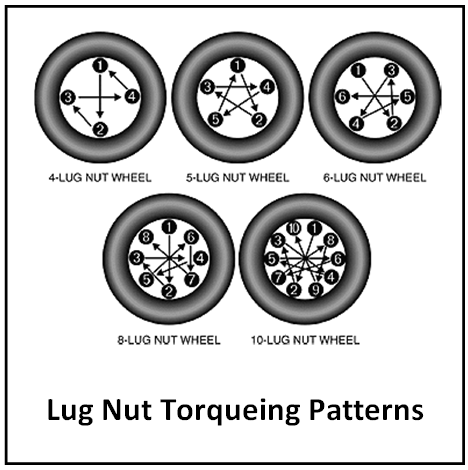
“You were dealing with Yankees and Southerners and bootleggers,” said meeting participant Sam Packard, a driver and a France friend in an interview many years later. “But everybody went along pretty good with what needed to be done. We had been racing around the Carolinas and other places, and the promoters had been taking off with the money and leaving us stranded. But with this organization, the promoter had to put money in escrow before we ever ran. So you were sure to get paid.”
The organization was named the National Association for Stock Car Auto Racing, a suggestion by Atlanta garage owner and car and engine builder Louis “Red” Vogt.
NASCAR was incorporated in February 1948 and held its first race Feb. 15 on the beach-road course at Daytona Beach. The Strictly Stock (now Cup) series began in 1949.
By Mike HembreeDec 14, 2022, 7:00 AM EST
The start of Christopher Bell‘s 2022 NASCAR Cup Series season was decidedly underwhelming.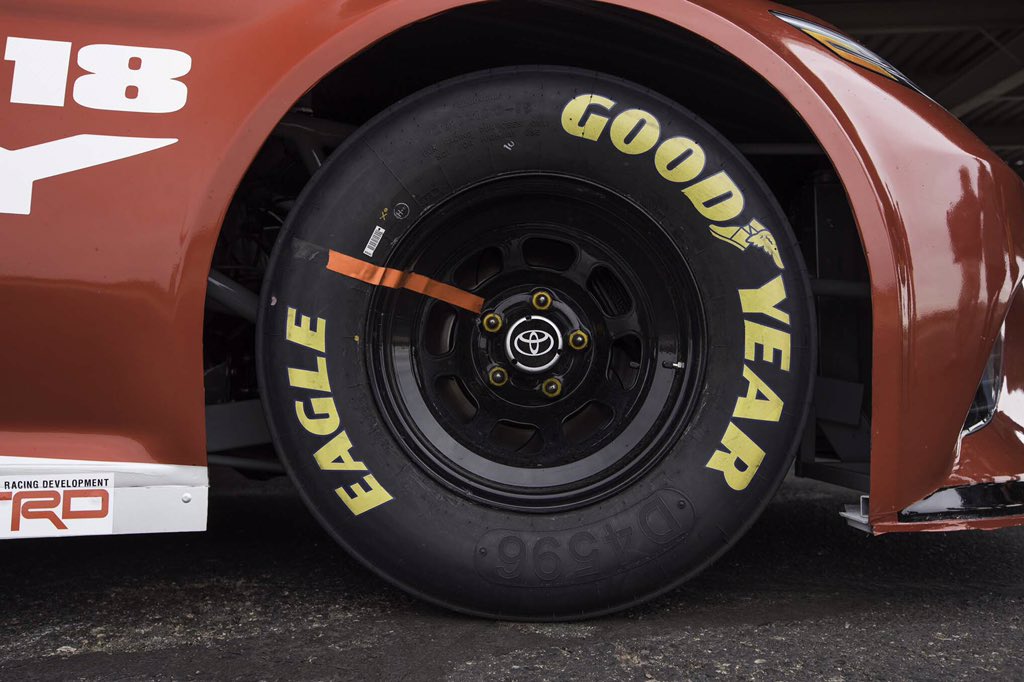
A crash and a 34th-place finish in the Daytona 500. Engine failure and 36th at Auto Club Speedway. A 10th at Las Vegas, followed by a 26th at Phoenix and a 23rd at Atlanta.
Five races into the season, it would have been difficult to predict that Bell and his Joe Gibbs Racing team would be challenging for the series championship late in the year, thanks largely to a couple of spectacular races in the playoffs.
Bell eventually finished third in the standings, winning three races and emerging from a hole that found him 21st in the point standings seven races into the year. His finish provides a boost into 2023, when he figures to be in the running for the title again.
The turnaround started, Bell said as he looked back over the season, in practice for the third race, at Las Vegas.
“We started off so bad and got in such a points hole,” Bell said. “The first stretch was really a low point for us. We had to overcome that.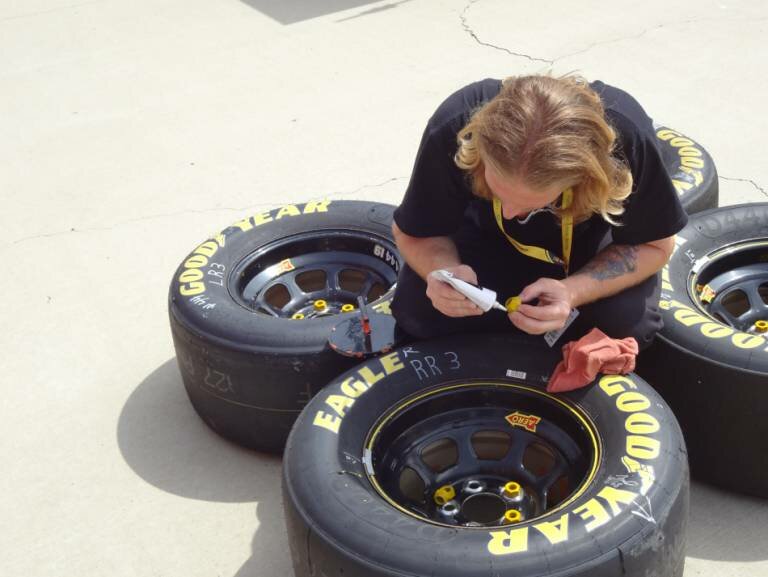 At California we were mediocre. We got to Vegas. In practice Adam (crew chief Adam Stevens) felt like we needed to steer the car in one direction, and I was telling him the other. When he was able to give me what I needed to feel in the car, we immediately went to the top of the charts. That Vegas practice session was the turning point.
At California we were mediocre. We got to Vegas. In practice Adam (crew chief Adam Stevens) felt like we needed to steer the car in one direction, and I was telling him the other. When he was able to give me what I needed to feel in the car, we immediately went to the top of the charts. That Vegas practice session was the turning point.
“We really started clicking well. The biggest thing was him learning what I needed in the car to be successful. We had such little time on the track in 2021. In 2022, having practice and qualifying really allowed us to gel and have success.”
By the time the playoffs arrived, Bell had won at New Hampshire and had pushed into the top 10 in points.
“When it came down to the playoff races, I knew that going to the mile-and-halfs I could hold my foot down,” he said. “I had confidence in my team that they were going to give me the balance in the car I needed to perform well.”
Still, the playoffs threw big challenges at Bell.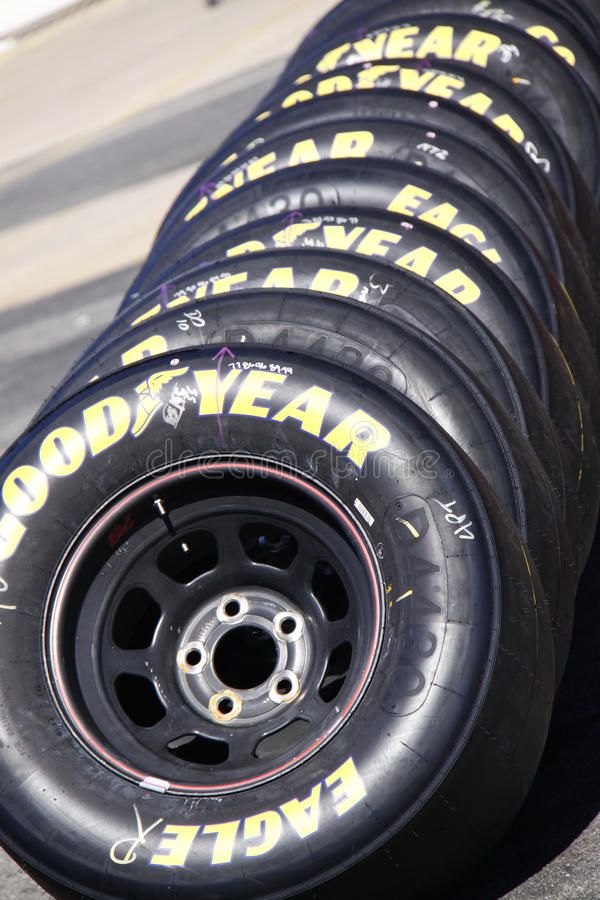 To advance, he needed wins in the races that ended the second round (Charlotte Roval) and the third round (Martinsville) and, remarkably, he got them. His performances in those races produced two of the best under-pressure runs of the season.
To advance, he needed wins in the races that ended the second round (Charlotte Roval) and the third round (Martinsville) and, remarkably, he got them. His performances in those races produced two of the best under-pressure runs of the season.
“Looking at those two races, we won under completely different circumstances,” Bell said. “At the Roval we didn’t have the fastest car, but we got the opportunity given to us with the late yellow flag and threw strategy at it. At Martinsville we did win by having one of the strongest cars that day. At Charlotte it was a case of never giving up.”
At Phoenix in the championship race, Bell finished 10th and was third among the four title contenders, behind champion Joey Logano and Ross Chastain.
“The last five weeks of the season were so stressful and full of emotions — highs and lows,” Bell said. “I think the 20 group grew as a whole, and I feel like we’re capable of starting out the year extremely strong in 2023. I think the sky is the limit for us. I feel positive about what is going to happen when we start off the next season.”
I feel positive about what is going to happen when we start off the next season.”
By Mike HembreeDec 13, 2022, 6:45 PM EST
NASCAR team owner Justin Marks announced Tuesday the creation of Trackhouse360, a new division of Trackhouse Entertainment Group.
Trackhouse Racing, which fields two cars in the NASCAR Cup Series, is the most visible part of Trackhouse Entertainment. Marks has said he wants to expand Trackhouse into other entertainment fields, and Trackhouse360 will control that element of the company.
Marks named Dean Stoyer, who has 30 years of experience in sports marketing, as Trackhouse360 brand strategy officer. Stoyer has worked for ESPN, Under Armor, Nike and the NBA’s Phoenix Suns.
According to a statement released by Marks, Trackhouse360 will develop “creative and compelling original content, non-traditional merchandise and apparel” and will be involved in event promotion.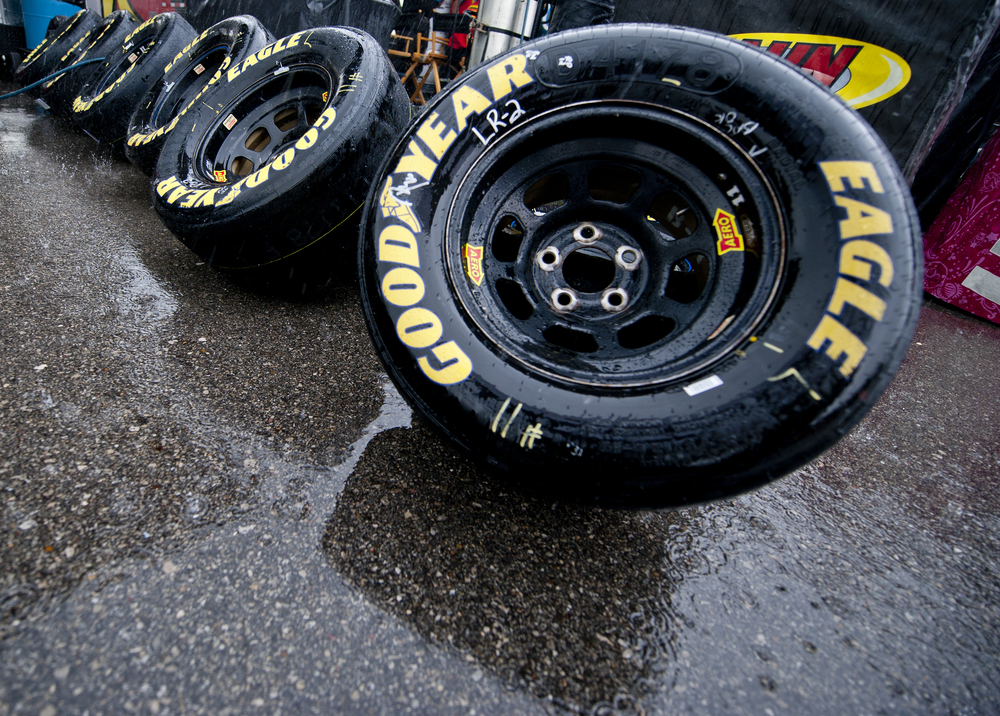
“Now that we have established a competitive racing team, it’s time to take the next step in building a business that educates, entertains and inspires millions of Americans through compelling storytelling and experiences,” Marks said in a company statement. “I can’t think of anyone better than Dean Stoyer to lead the business into the future. His diverse experience, relationships and vision will be a tremendous asset as we grow Trackhouse into something incredibly special and valuable.”
Trackhouse Racing put two drivers — Ross Chastain and Daniel Suarez — in the Cup Series playoffs this season. Chastain finished second, and Suarez was 10th. Both drivers scored their first Cup wins this year.
What are spikes and why are they needed?
Purpose of studs on winter tires
How many studs are on winter tires from different manufacturers?
How many studs are on winter tires of different sizes?
Conclusion
When choosing winter tires for the next year, drivers actively study ratings, expert reviews, reviews of other motorists.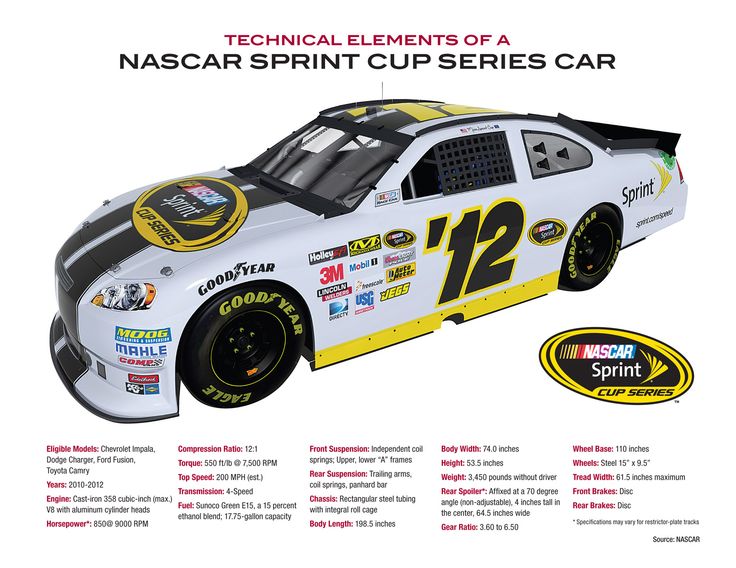 In each of these materials, you can find divisions into studded and non-studded tires. In the first case, special attention is paid to the wear resistance of metal inserts. To make it easier to choose the right tires and control the level of durability, attentive drivers sometimes ask themselves the question: “How many studs are on winter tires, and what does this parameter affect?”. In this article we will try to understand the features of modern studding, but it is worth mentioning right away that the exact number of inserts depends on the manufacturer and the specific model.
In each of these materials, you can find divisions into studded and non-studded tires. In the first case, special attention is paid to the wear resistance of metal inserts. To make it easier to choose the right tires and control the level of durability, attentive drivers sometimes ask themselves the question: “How many studs are on winter tires, and what does this parameter affect?”. In this article we will try to understand the features of modern studding, but it is worth mentioning right away that the exact number of inserts depends on the manufacturer and the specific model.
Studs are found exclusively on winter tires and are not allowed for use in every region. Metal inserts can spoil the road surface, and therefore in countries with warm winters they are completely banned.
The spike is a two-piece metal element.
The core of the inclusion or the so-called body. This is the part of the stud that is visible when visually inspecting the tires.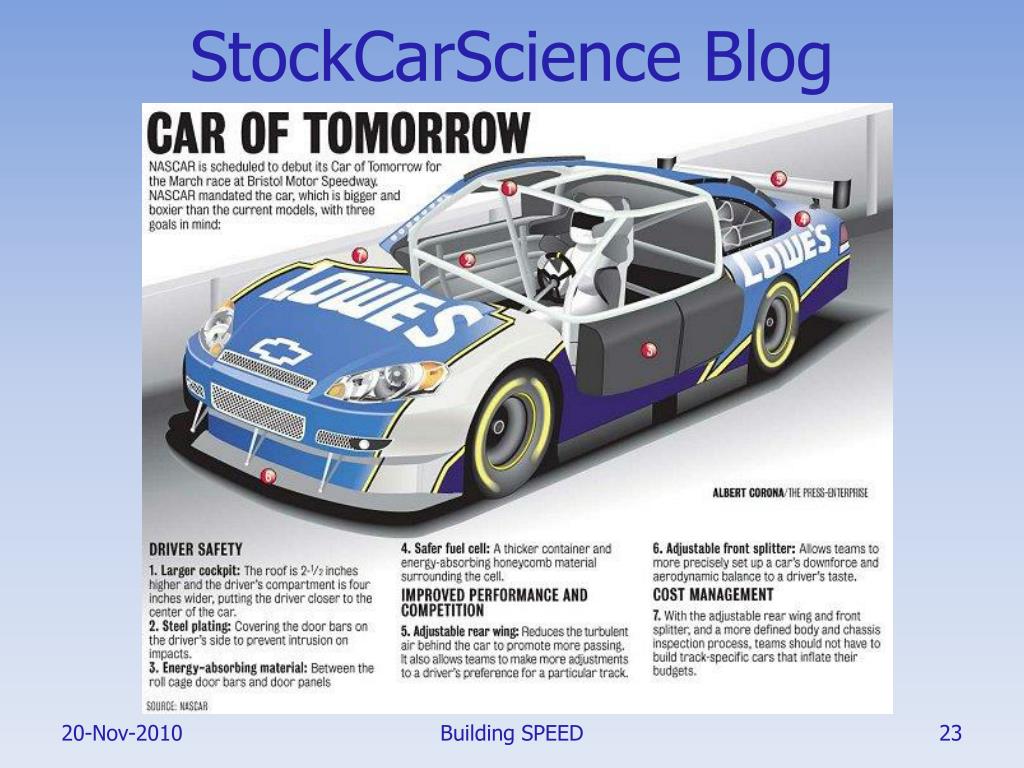 The rod is responsible for holding the metal structure in winter tires. This part of the stud is made of light alloy and may have additional serrations that reduce the risk of flying out.
The rod is responsible for holding the metal structure in winter tires. This part of the stud is made of light alloy and may have additional serrations that reduce the risk of flying out.
The core of the spike. This bulging part is of the greatest importance, as it provides traction on ice and packed snow.
Winter tire manufacturers are redesigning the carbide insert and body to provide better wear and grip. However, the weight of the spike is limited. In Russia, this parameter should not exceed 1.6 g. For tires manufactured in Finland, there is a stricter limit - 1.1 g.
The tasks of tires used in winter are reduced to the need to cope with snow porridge and mud, provide cross-country ability in deep snow and efficient braking, fast acceleration on ice. To perform the latter function, spikes are used. They work on ice and packed snow, literally biting into the surface.
Obviously, the greater the number of metal inserts in studded tires, the more effective braking and acceleration.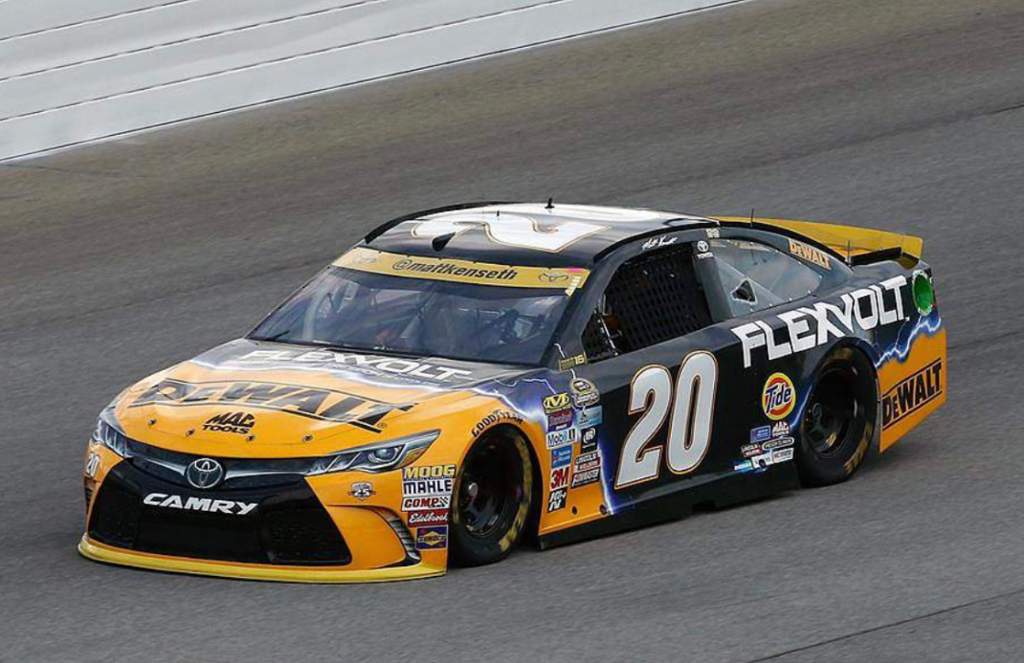 However, with the use of new technologies, some manufacturers have managed to achieve good performance with a small number of studs. The car is confidently controlled on a slippery road due to sipes and grip blocks on tires, an improved rubber compound.
However, with the use of new technologies, some manufacturers have managed to achieve good performance with a small number of studs. The car is confidently controlled on a slippery road due to sipes and grip blocks on tires, an improved rubber compound.
As mentioned above, the number of metal inserts is regulated in different countries in their own way. The inclusion of studs in the design of the tire is only allowed in the Scandinavian and European countries. Asian regions do not welcome the use of metal hooks, but some manufacturers from Japan, Korea and China make similar models for import to countries with a cold climate. A striking example of such brands is Bridgestone, Yokohama. In various models from Asian plants, a large number of spikes cannot be seen. As a rule, the number of metal inserts does not exceed 130 pieces per tire.
In the Scandinavian countries since 2009 there has been a regulation prohibiting the installation of spikes in quantities of more than 50 pieces per linear meter. However, this regulation has a caveat. A manufacturer can make more studs on their tires if they can prove that it does not harm asphalt and other road surfaces. Finnish brands hold the record for the number of holds. In some models, their number can reach 180 units.
However, this regulation has a caveat. A manufacturer can make more studs on their tires if they can prove that it does not harm asphalt and other road surfaces. Finnish brands hold the record for the number of holds. In some models, their number can reach 180 units.
Domestic manufacturers have no restrictions on the number of studs on tires produced. Therefore, in the models of Russian brands, you can find from 130 to 160 metal inserts.
The number of metal inserts ranges from 90 to 190 pieces. The exact quantity is an individual parameter, which is influenced by the design features and the technologies used.
This size is very common among budget cars. On winter tires Nokian Nordman 5 size R13, 110 studs were counted. It is worth noting here that according to generally accepted standards, the number of metal inserts on rubber of this diameter should be up to 90 pieces per wheel, but some manufacturers exceed this figure if it does not harm the road surface.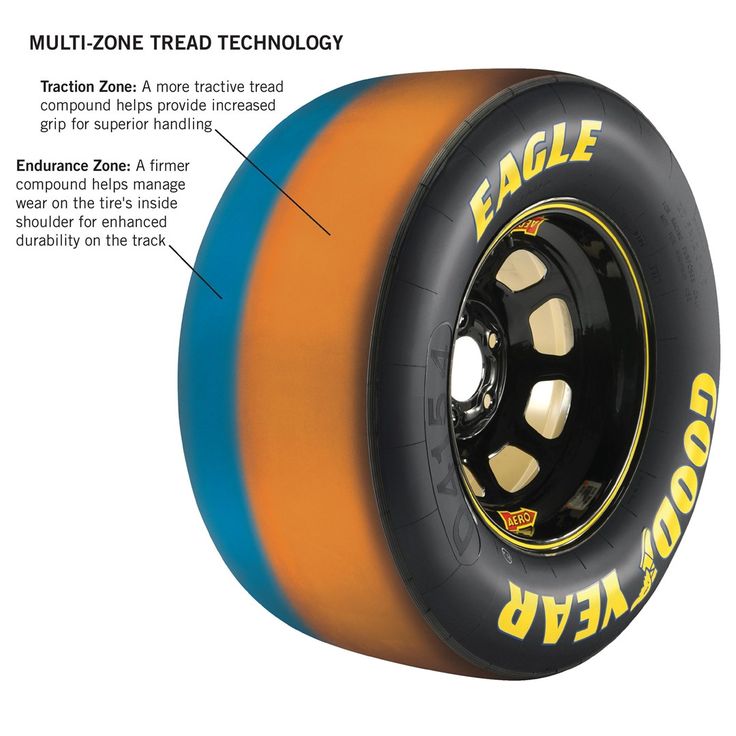
New cars of domestic production (Grant, Priora and others) are already equipped with R14 wheels, so this size is gradually replacing the 13th diameter. On winter tires Nokian Nordman 4 and 5 also managed to count 110 studs. Cordiant Polar has similar indicators. Fewer studs for Gislaved Nord Frost rubber - 90, as it should be by established standards. Nokian Hakkapeliitta 8 - 165 tires became the leader in the number of metal inserts.
If we take the same Nokian Nordman 5, you can see that the number of spikes on the rubber does not change with increasing diameter. On the R15, in which budget foreign cars and domestic cars of a complete set are “shoeed”, there are still the same 110 pieces. The tendency to keep the same number of studs is also seen in Cordiant, Bridgestone, Gislaved, KAMA.
This diameter is common among foreign cars of class C.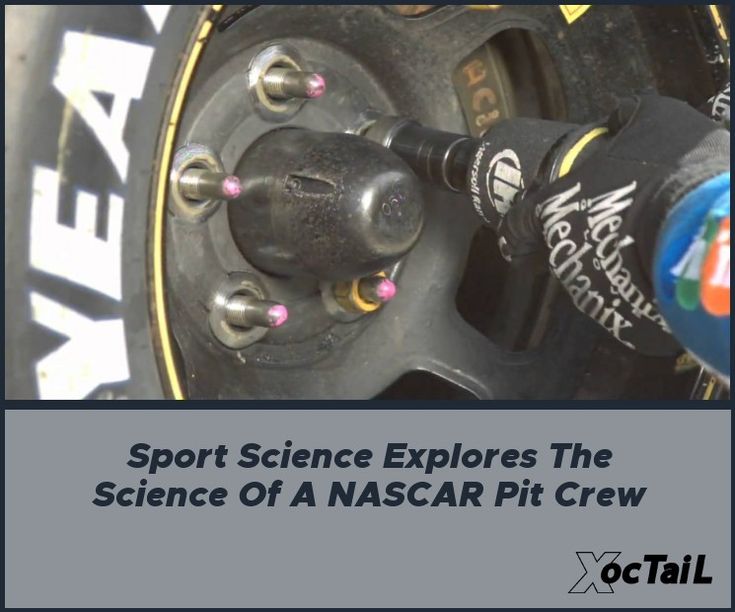 On the Chinese Nexen with a diameter of R16, 108 studs are installed. Nokian Hakkapeliitta 9 has a record number of 172, while Nokian Nordman 4 and Pirelli Ice Zero have 130 each.
On the Chinese Nexen with a diameter of R16, 108 studs are installed. Nokian Hakkapeliitta 9 has a record number of 172, while Nokian Nordman 4 and Pirelli Ice Zero have 130 each.
This tire is suitable for luxury cars and crossovers. Goodyear has 130 studded 17-inch tires with its UltraGrip Ice Arctic model.
This large size winter tire is used on SUVs and some SUVs. The number of spikes often exceeds 130 pieces. However, there are also models with a limited number. For example, Toyo Tires managed to count 100 spikes.
The average number of studs for rubber of different diameters can be found in this table.
| Wheel size | Number of spikes (pcs) |
| R13 | 90-110 |
| R14 | 90-110 |
| R15 | 110 |
| R16 | 100-180 |
| R17 | 130 |
| R18 | 100-160 |
As can be seen from the review of some popular models, tire size has little to no effect on the number of studs.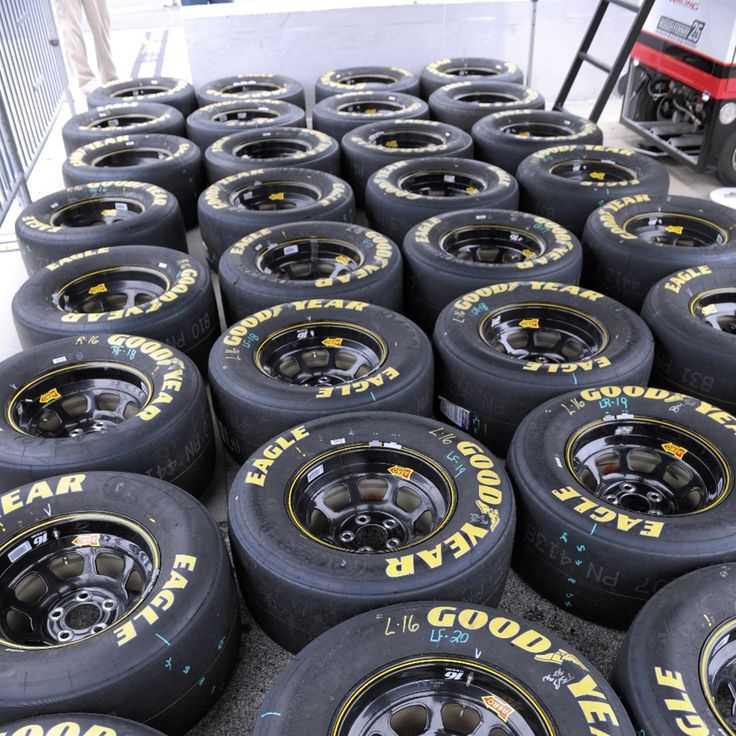
During operation, winter tires may lose their studs. The rate of wear of rubber depends on the quality of the chosen model and the characteristics of the road surface. According to current standards, studded winter tires can be used even if 40% of the metal inserts are retained. When buying tires for the winter, you should pay attention not only to how many studs are in a particular model and what is the level of wear, but also to other important features:
patency;
exchange rate stability;
rubber softness;
stability of characteristics in different weather conditions;
hydroplaning resistance and rapid water drainage.
At the same time, it is worth remembering that studded winter tires are noisier and require running in, which will help extend their life. At the same time, spikes are not always needed for a comfortable and safe ride in winter.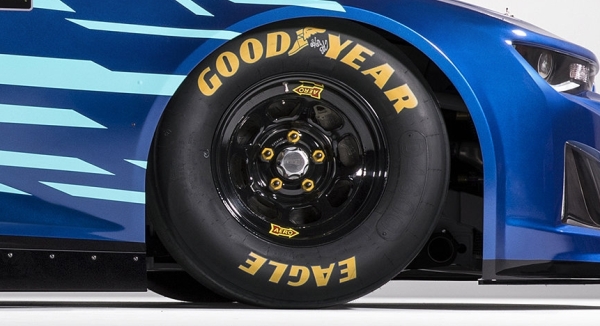 If you spend most of your time in a city where the roads are regularly cleaned and sprinkled with reagents, it is more advisable to purchase the so-called Velcro or friction tires. The following video will help you understand the intricacies of choosing between studded and non-studded tires:
If you spend most of your time in a city where the roads are regularly cleaned and sprinkled with reagents, it is more advisable to purchase the so-called Velcro or friction tires. The following video will help you understand the intricacies of choosing between studded and non-studded tires:
Vladimir Gavrilov
Estimated reading time: 4 minutes
8430
Category: Auto Service
Studs in winter tires significantly improve the car's behavior on icy roads. 8-9 always work in the contact patchmetal teeth that bite into the ice and prevent slipping.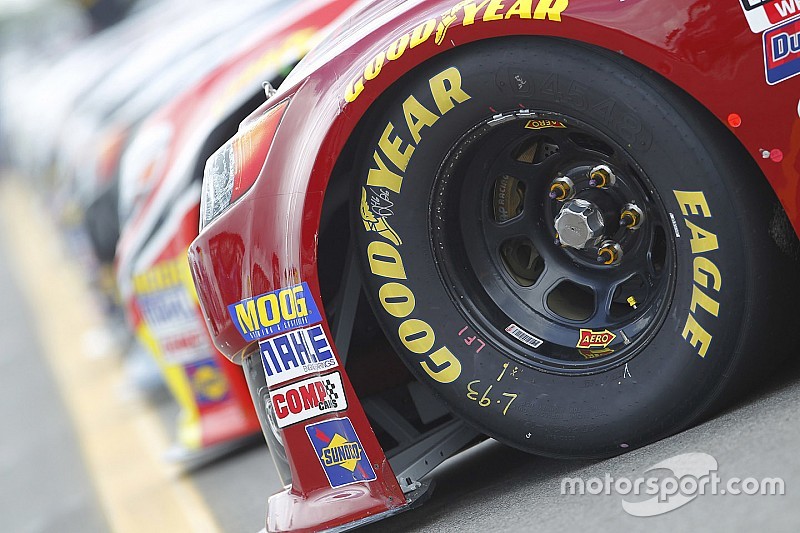 On hard surfaces, the studs can hide in their sockets, allowing the studded rubber tread to provide traction. Fine cutting of lomels envelops the surface of the road and seems to stick to it. In this case, the spikes stop working, and the grip properties of the wheel are determined by the characteristics of the tread and the composition of the rubber compound.
On hard surfaces, the studs can hide in their sockets, allowing the studded rubber tread to provide traction. Fine cutting of lomels envelops the surface of the road and seems to stick to it. In this case, the spikes stop working, and the grip properties of the wheel are determined by the characteristics of the tread and the composition of the rubber compound.
There is no clear indication in domestic legislation about how many studs a tire should have. The rules of the road also do not contain any requirements for the number of spikes. Only in a few European countries have regulations been approved that studs cannot contain more than 50 studs per linear meter of tire in order to avoid high wear on the surface layer of asphalt roads. That's about 100 studs on one R16 wheel. Meanwhile, in Russia there are no such strict restrictions, and tires for icy roads with 120, 180 and even 190 spikes.
The lower limit of studding is also not specified in the regulations. Only in the list of malfunctions and in the technical regulations of the Customs Union is the requirement for the tread height of a winter tire indicated. It must be at least 4 mm. However, manufacturers have standards for studs, and, guided by them, one can evaluate the ability of the wheel to provide the declared driving characteristics.
Only in the list of malfunctions and in the technical regulations of the Customs Union is the requirement for the tread height of a winter tire indicated. It must be at least 4 mm. However, manufacturers have standards for studs, and, guided by them, one can evaluate the ability of the wheel to provide the declared driving characteristics.
Typically, a new tire will lose no more than 5% of its metal teeth in the first year of use. And this means that the weakening of adhesion to the icy road will be observed in negligibly small periods of time. It does not affect the driving characteristics.
In the second season of operation, frequent trips on asphalt in the thaw lead to the loss of the same number of spikes, namely 5-10 pieces. The wheel is already losing 10% of the teeth, which is why loss of grip in the contact patch will be observed more often. However, 90% of the spikes are enough to provide the characteristics declared by the manufacturer.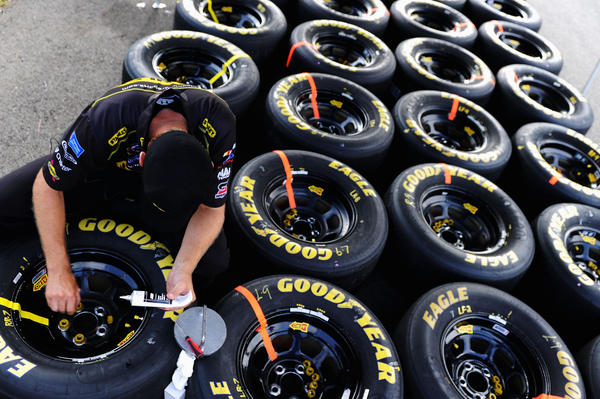
After the third season, the tire is missing about 20% of the teeth, and after the fourth year it is already 30-40%. The fourth year of operation of spikes is considered critical. The rubber compound under the influence of road chemicals and due to solar radiation loses its elasticity, and the spikes fall out rapidly. The car already holds the road worse, since a pair of teeth is almost always missing in the contact patch. Although in everyday operation, changes in the behavior of the machine are almost imperceptible and can only be recorded by instruments at specialized sites.
After the fifth year of use, a tire may lose more than 50% of its studs. Such a wheel in the contact patch has a constant shortage of teeth. Instead of 8-9 pieces, only 4-5 spikes work, which is why the coupling properties are noticeably reduced. The braking distance is growing, drivers have to take this into account and not to speed up, as before. However, you can ride on such a tire.